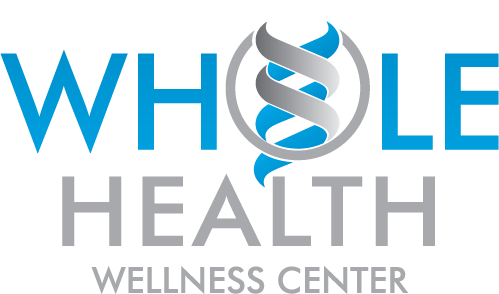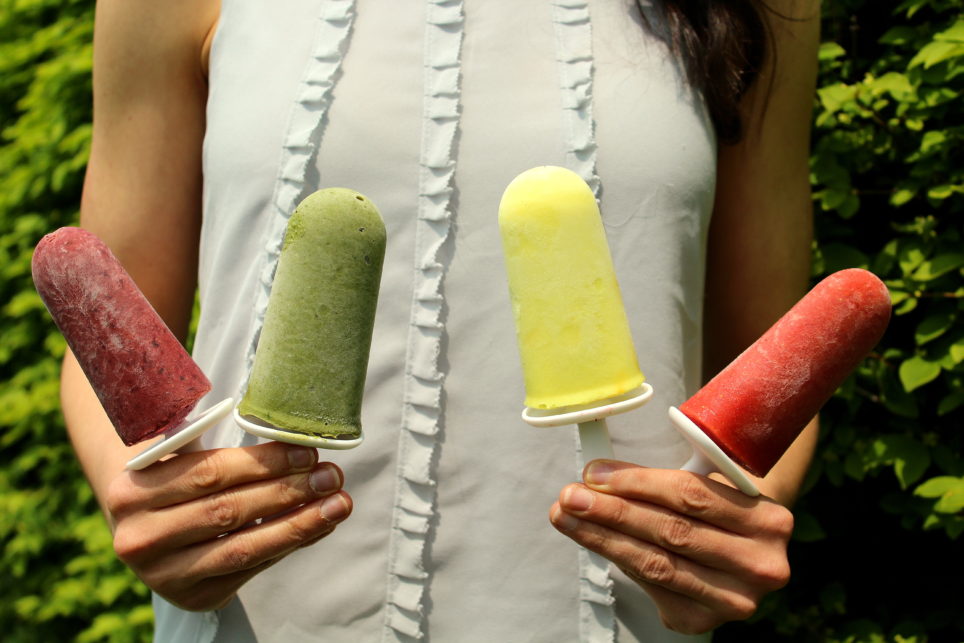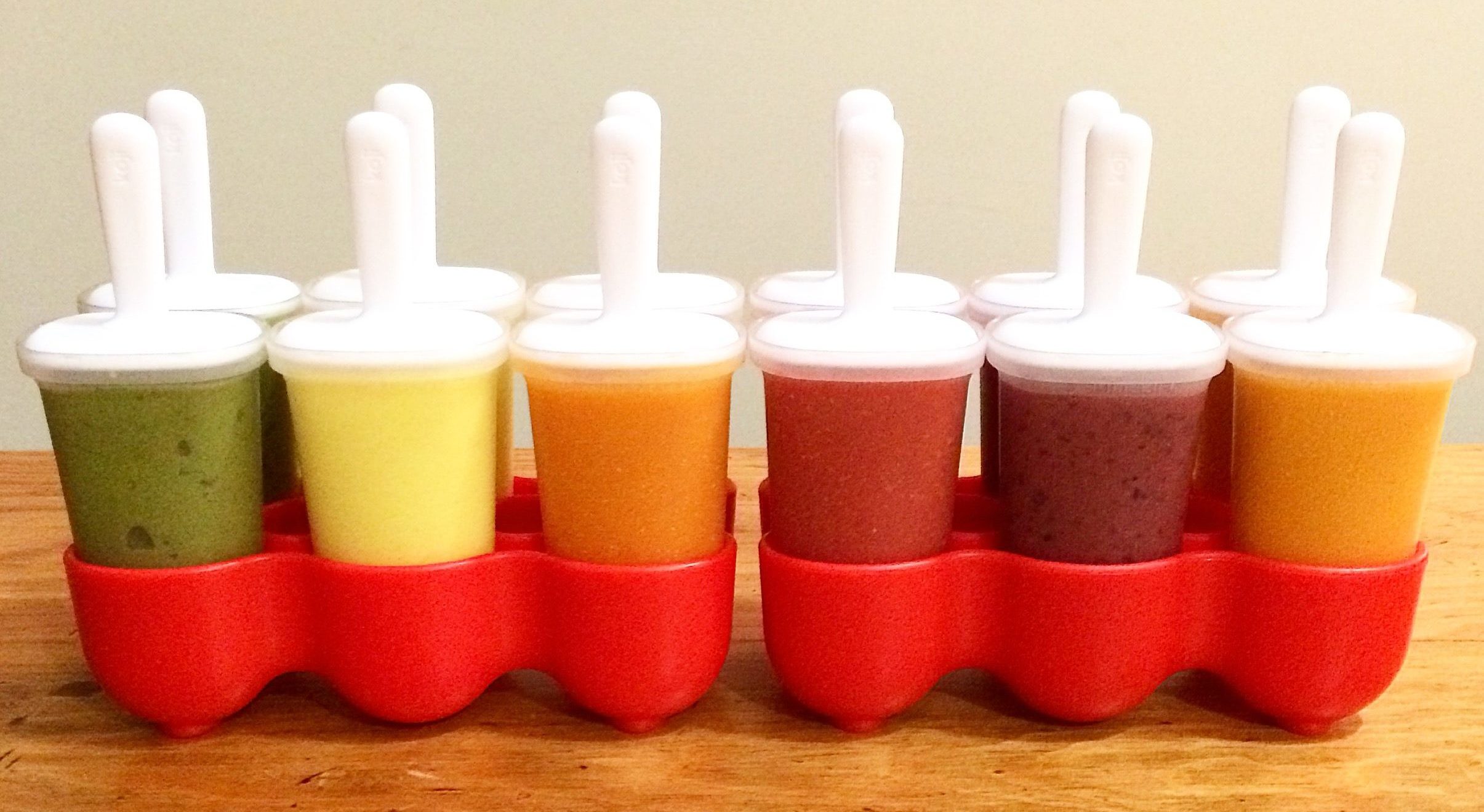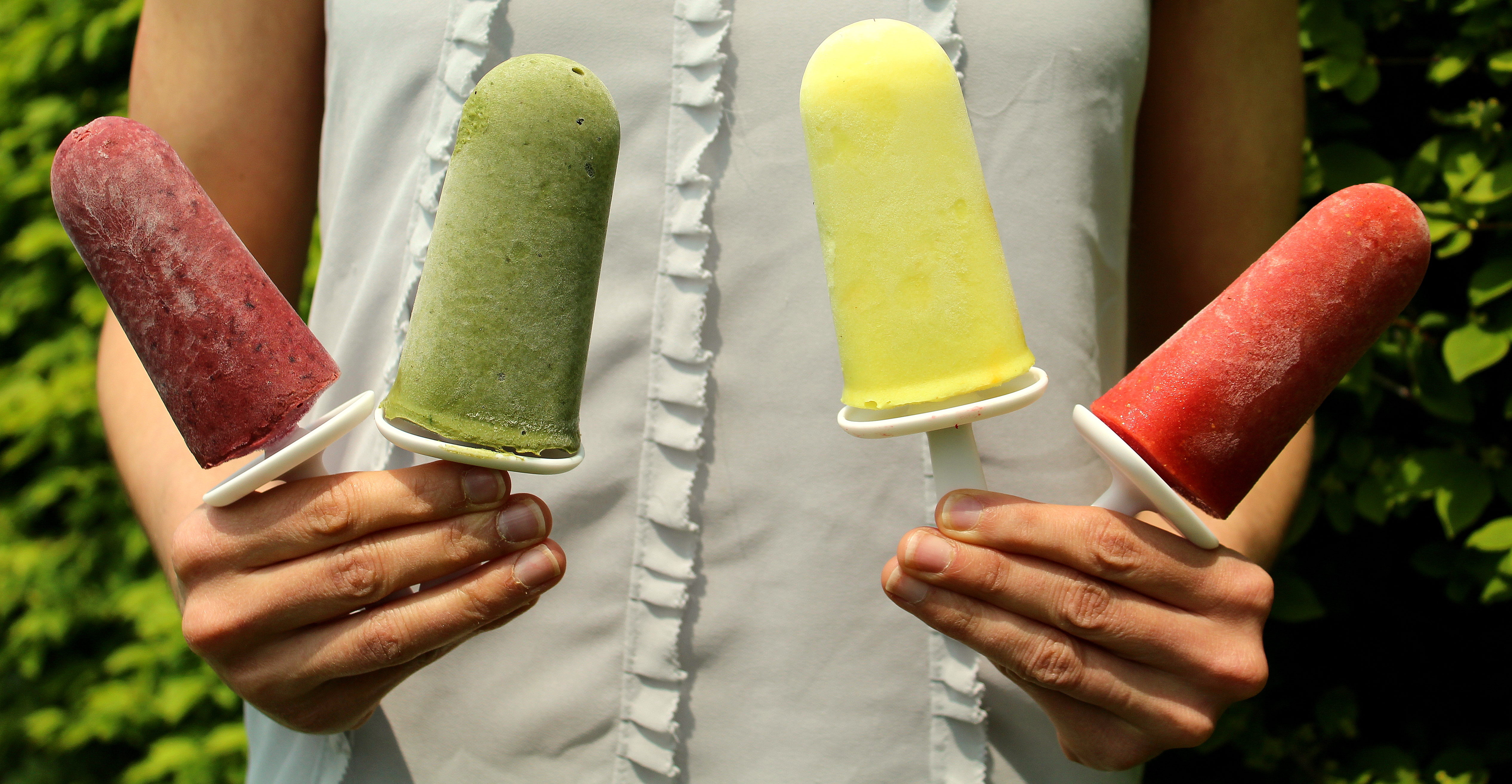We hope you enjoy these 5 recipes for frozen pops containing quercetin and nettle! This was a collaboration between Dr. Aylah Clark and Dr. Sally Machin.
This article was written to inform. The article and its contents are not intended to treat, diagnose, prevent, or cure any disease.
It’s that time of the year again when the antihistamine medications come out and tissues are always in arms reach for allergy-sufferers. Here in Connecticut the trees are budding, flowers are blooming, and there’s a thin yellow coating over the entire Farmington Valley.
It seemed like a good time for us to come up with some recipes for popsicles that contain quercetin and nettles, both of which have been shown to support a more balanced immune response. If you want to get into the research behind these two ingredients, scroll past the recipes for more information.
For kids who aren’t allergy-sufferers, quercetin and nettles can be taken out of the recipes and the pops can be used as a delicious, fun-to-make, and healthier alternative to frozen treats with a lot of added sugar and artificial flavors.
**Any acute and severe allergic reaction needs immediate attention. Do not discontinue any current medications without first consulting your physician.**
The Recipes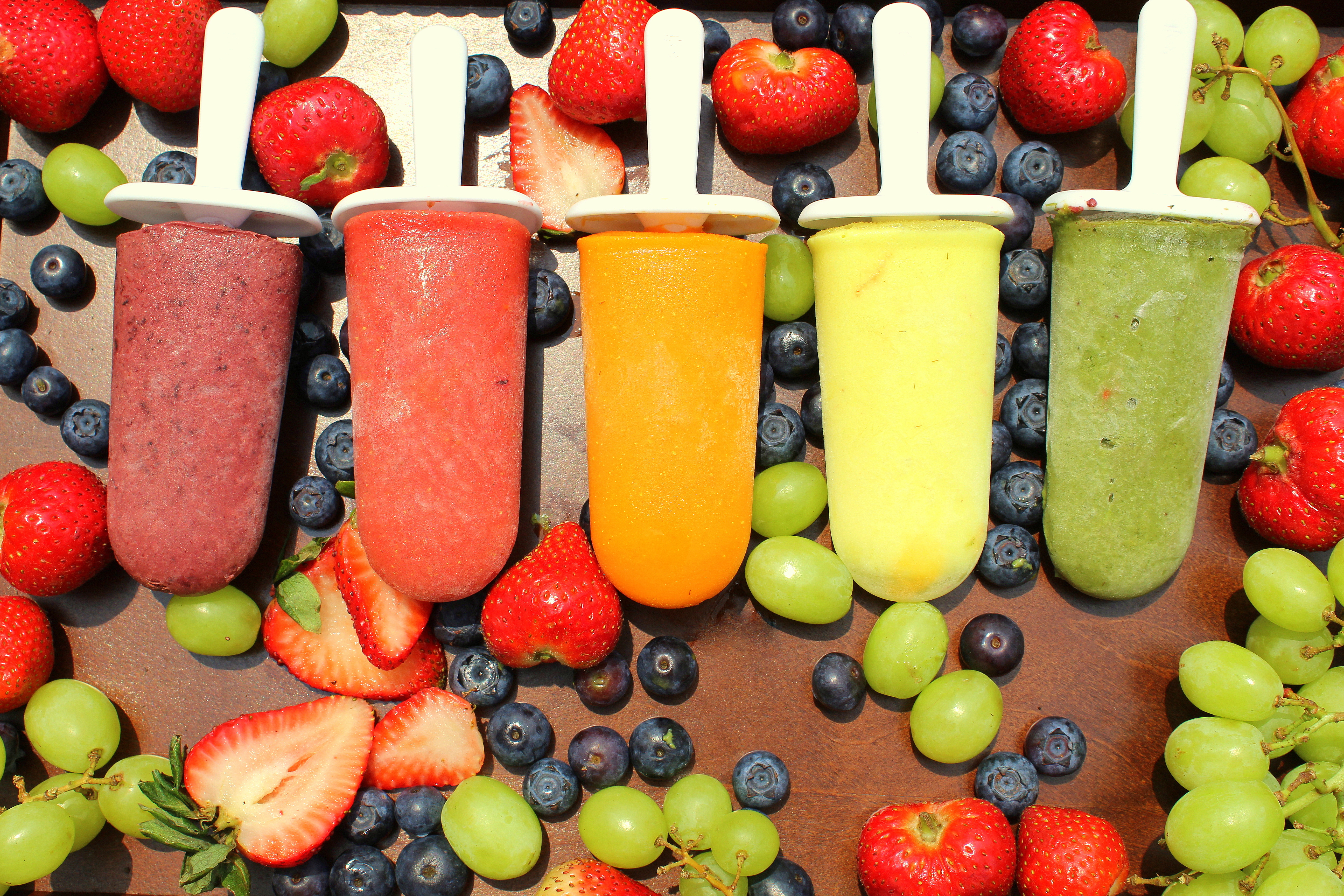
Each of the following recipes made 6 popsicles but it will depend on the size of your molds. Blend the ingredients in a blender, pour into Popsicle molds, and put them in the freezer until they are frozen through. Enjoy!
Pineapple Paradise (pineapple, coconut, lime)
- 2 cup cut pineapple
- 1 cup coconut milk*
- ½ lime, squeezed
- 1 ½ tsp quercetin-ascorbate powder**
Red Berry Bliss (hibiscus, strawberry, raspberry)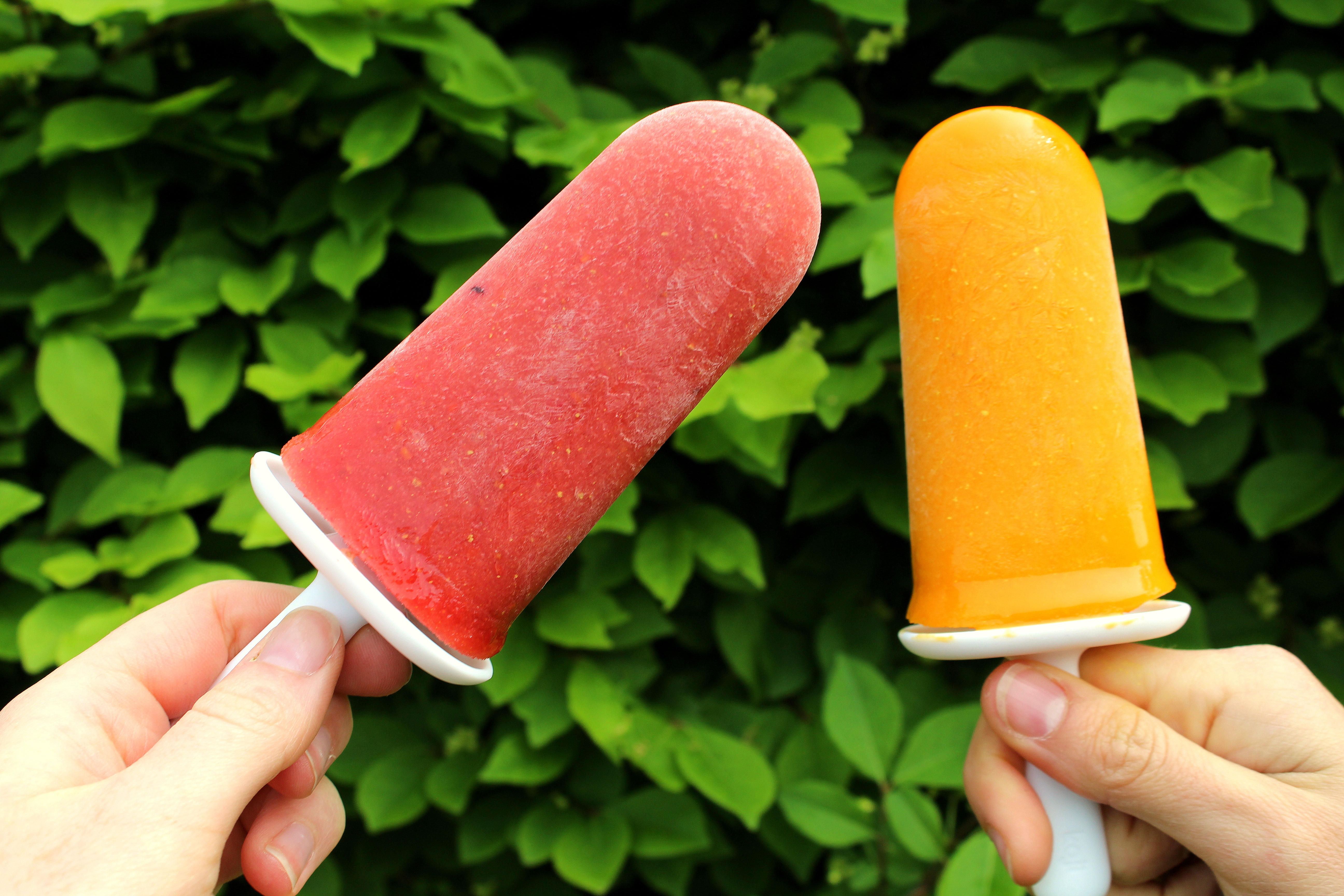
- 12 strawberries
- ½ cup raspberries
- ½ cup hibiscus tea
- 3 tbsp. local honey***
- 1 ½ tsp. quercetin-ascorbate powder**
Peachy Keen (carrot, peach, apple sauce)
- 1 cup applesauce
- 1 cup frozen sliced peaches
- 1 cup carrot juice
- 1 ½ tsp. quercetin-ascorbate powder**
Green Monster (avocado, banana, spinach)
- 3 bananas
- ¾ avocado
- 1 ½ cup spinach
- 7 ½ tbsp. apple sauce
- 12 caps freeze-dried nettle (open caps and empty contents into blender)
- Add some water if you need to for this one. With a Vitamix these ingredients blended fine but it is thick.
CocoBerry Blast (blueberries, blackberries, coconut)
- 1 cup blueberries
- 1 cup blackberries
- 1 ¼ cup coconut milk*
- 3 tbsp. local honey***
- 6 capsules freeze-dried stinging nettle (open caps and empty contents into blender)
- 1 tsp. quercetin-ascorbate powder**
*Use the full fat coconut milk you find in cans, not the type in cartons
**Our quercetin-ascorbate powder contained 500 mg quercetin and 500 mg ascorbic acid (vitamin C) per ¼ tsp.
***We used honey from Jones Apiary in Farmington, CT
The Scoop:
Allergies and the Ingredients we Used in our Frozen Pops
Allergies of many types are increasing in prevalence. Why? It’s complicated, but it’s related to how our immune systems have evolved, how our immune systems develop in the current environment we live in, genetics and changes that influence gene expression called epigenetics. Intestinal health, such as intestinal permeability (larger particles getting between intestinal cells than should), and increased permeability in the nasal mucosa can even play a role. [1]
Are there risks to allergy medications?
Allergy medications fall into different classes based on how they act in the body (called 1st generation and 2nd generation). Some are fairly non-selective in the receptors they block while others are more targeted. Some cause sedation while others do not. They also come with different risks. H1-receptor blockers may contribute to the increased prevalence of obesity and metabolic syndrome in adults. [2]
High use of 1st generation antihistamines that also fall under the class of anticholinergics like diphenhydramine/Benadryl, have been associated with increased risk of dementia. [3] 1st generation antihistamines tend to have more side effects because they are less selective and can cross into the brain. However, 2nd generation antihistamines can also result in side effects like fatigue and dry mouth.
There’s certainly a time and a place for antihistamine drugs, but with the long-term associated risks, alternatives to help manage allergy symptoms are sought by many. It is best to try to address the root cause of any symptom, but sometimes that can be difficult to determine or take a long time to see results. Symptomatic relief in the meantime is important. Some individuals find that options like stinging nettle, quercetin, and vitamin C can help them get through allergy season.
Keep in mind that these natural options do not work the same way as anti-histamines and the effect can take some time to build up (vs. the short-term response from anti-histamines). For cases of severe allergy such as anaphylaxis, these would not be good options.
Stinging Nettle
Stinging Nettle, also known as Urtica dioica, gets its name because of the skin reaction that occurs on contact with its tiny stinging hairs (urticaria is the medical term for hives). Stinging Nettle contains histamine, which is a compound released by specific immune cells (mast cells) resulting in symptoms like itching associated with allergy. It can cause quite a strong response! So why would we want to use this plant to treat allergy?
Stinging Nettle has been studied for its anti-inflammatory effect, particularly in allergic conditions, and has traditionally been used as a treatment for eczema. A randomized, double-blind, placebo-controlled study showed that Stinging Nettle was effective for the treatment of allergic rhinitis (the runny nose and congestion from allergies). [4] In a small pilot study 57% of patients rated nettles as effective in relieving allergies and 48% said that nettles were more effective than allergy medications they had used previously. [5]
How Stinging Nettle Works
An extract from the plant called caffeic malic acid was shown to inhibit both cyclooxygenase and 5-lipoxygenase-derived reactions. [6] The cyclooxygenase pathway is where NSAIDS like Aspirin act. The 5-lipoxygenase pathway produces substances called leukotrienes which are important causes of symptoms in asthma.
Stinging nettle may inhibit the release of cytokines (cell-signaling proteins that can be involved in immune and inflammatory responses) but studies have had mixed results. [7] [8] [9] Caution should be used with Stinging Nettle in some people due to its mild hypotensive effect (blood pressure-lowering) and because theoretically it may decrease the efficacy of anticoagulant drugs.
Quercetin
Quercetin is the most common flavonoid in the human diet and is found in
onions, apples, black tea, kale, and red wine. [10] Quercetin inhibits activation of mast cells. These are immune cells that release histamine. They are essential to the development of allergic and inflammatory conditions. [11]
Quercetin was shown to be more effective than cromolyn (a mast-cell stabilizer drug used in allergic disease) at inhibiting the release of pro-inflammatory cytokines like IL-8 and TNF from mast cells. Unlike cromolyn, quercetin can be used preventively. [12]
Quercetin has also been shown to inhibit activation another immune cell involved in allergic responses called an eosinophil. [13] Dietary absorption of quercetin is relatively low (1.39% from onions, 0.44% from apples) [14] so supplementation at higher doses than found in the diet is necessary to get a therapeutic effect.
Quercetin Safety
Quercetin is categorized as Generally Recognized As Safe (GRAS) and negative side effects at gram doses have not been reported in humans. Quercetin has been shown to have blood pressure-lowering effects but only in hypertensive subjects and not in people with normal blood pressure. [15]
Quercetin may interact with some medications and safety studies have not looked at use longer than 12 weeks at doses of 500mg twice daily. [16] [17] For this reason, longer dosing or taking doses that exceed 1 gram daily is not recommended, unless under the supervision of your physician. Adverse effects were not seen until doses much higher. [18]
Local Honey
There isn’t a lot of hard evidence to support the idea that eating local honey actually helps decrease allergies, though many people report this benefit. In theory it sounds good: you eat honey which contains a small amount of pollen and your body develops an adaptive response. This is essentially the idea behind immunotherapy. One issue is that most people are not allergic to flower pollens that are found in the honey, but rather grasses and tree pollens that bees don’t pollinate.
In addition, you can’t be entirely sure which pollens are present because bees encounter pollen from different sources. Honey certainly has some benefits that are well documented like its antibacterial properties [20] [21] and ability to soothe a sore throat or help with a cough. Buying local will also support your local bee keepers. Honey should not be consumed by (those under 1 year old) due to the risk of botulism which can be life-threatening.
Works Cited
[1] B. Steelant, “Impaired barrier function in patients with house dust mite-induced allergic rhinitis is accompanied by decreased occludin and zonula occludens-1 expression,” J Allergy Clin Immunol, vol. 137, no. 4, pp. 1043-1053, 2016.[2] J. Ratliff, J. Barber, L. Palmese, E. Reutenauer and C. Tek, “Association of prescription H1 antihistamine use with obesity: results from the National Health and Nutrition Examination Survey,” Obesity (Silver Spring), vol. 18, no. 12, pp. 2398-400, 2010.
[3] S. Gray, M. Anderson, S. Dublin, J. Hanlon, R. Hubbard, R. Walker, O. Yu, P. Crane and E. Larson, “Cumulative use of strong anticholinergics and incident dementia: a prospective cohort study,” JAMA Intern Med, vol. 175, no. 3, pp. 401-407, 2015.
[4] P. Mittman, “Randomized, double-blind study of freeze-dried Urtica Dioica in the treatment of allregic rhinitis,” Planta Med, vol. 56, no. 1, pp. 44-47, 1990.
[5] D. J. Baumgardner, “Stinging nettle: the bad, the good, the unknown,” Journal of Patient-Centered Research and Reviews, vol. 3, no. 1, 2016.
[6] B. Obertreis, K. Giller and T. Teucher, Arzneium Forsch, vol. 46, no. 1, pp. 52-56, 1996.
[7] B. Obertreis, T. Ruttkowski and T. Teucher, Arzneim Forsch, vol. 46, no. 4, pp. 389-394, 1996.
[8] H. Wagner, F. Willer and R. SSamtleben, Phytomed, vol. 1, pp. 213-224, 1994.
[9] T. Teucher, B. Obertreis and T. Ruttkowski, Arzneim Forsch, vol. 46, no. 9, pp. 906-910, 1996.
[10] J. Formica and W. Regelson, “Review of the biology of quercetin and reltaed bioflavonoids,” Food Chem Toxicol, vol. 33, pp. 1061-1080, 1995.
[11] M. Kim, S. Lim, S. Kang, B. Um and C. Nho, “Aceriphyllum rossii extract and its active compounds, quercetin and kaempferol inhibit IgE-mediated mast cell activation and passive cutaneous anaphylaxis,” J Agric Food Chem, vol. 62, no. 17, pp. 3750-8, 2014.
[12] Z. Weng, B. Zhang, S. Asadi, N. Sismanopoulos, A. Butcher, X. Fu, A. Katsarou-Katsari, C. Antoniou and T. Theoharides, “Quercetin is more effective than cromolyn in blocking human mast cell cytokine release and inhibits contact dermatitis and photosensitivity in humans,” PLoS One, vol. 7, no. 3, p. e33805, 2012.
[13] M. Sakai-Kashiwabara, S. Abe and K. Asano, “Suppressive activity of quercetin on the production of eosinophil chemoattractants from eosinophils in vitro,” In Vivo, vol. 28, no. 4, pp. 515-22, 2014.
[14] P. Hollman, J. van Trijp and M. Buysman, “Relative bioavailability of the antioxidant flavonoid quercetin from various foods in man,” FEBS Lett, vol. 418, pp. 152-156, 1997.
[15] R. Edwards, T. Lyon, S. Litwin, A. Rabovsky, J. D. Symons and T. Jalili, “Quercetin reduces blood pressure in hypertensive subjects,” J Nutr, vol. 137, no. 11, pp. 2405-2411, 2007.
[16] M. Harwood, B. Danielewska-Nikiel, J. Borzelleca, G. Flamm, G. Williams and T. Lines, “A critical review of the data related to the safety of quercetin and lack of evidence of in vivo toxicity, including lack of genotoxic/cardinogenic properties,” Food and Chemical Toxicology, vol. 45, no. 11, pp. 2179-2205, 2007.
[17] T. Okamoto, “Safety of quercetin for clinical application,” Int J Mol Med, vol. 16, no. 2, pp. 275-8, 2005.
[18] S. Teixeira, “Bioflavonoids: proanthocyanidins and quercetin and their potential roles in treating musculoskeletal conditions,” Journal of Orthopaedic & Sports Physical Therapy, vol. 32, no. 7, pp. 357-363, 2002.
[19] S. Helms and A. Miller, “Natural treatment of chronic rhinosinusitis,”Altern Med Rev, vol. 11, no. 3, pp. 196-207, 2006.
[21] E.K. Nishio, J.M. Ribeiro, A.G. Oliveira, C.G.T.J. Andrade, E.A. Proni, R.K.T. Kobayashi and G. Nakazato, “Antibacterial synergic effect of honey from two stingless bees: Scaptotigona bipunctata Lepeletier, 1836, and S postica Latreille, 1807,” Scientific Reports. 6, 21641; doi: 10.1038/srep21641 (2016). [22] D.A. Carter, S.E. Blair, N.N. Cokcetin, D. Bouzo, P. Brooks, R. Schotauer, and E.J. Harry, “Therapeutic
Manuka Honey: No Longer So Alternative,” Frontiers in Mibrobiology. doi:10.3389/fmicb.2016.
00569
